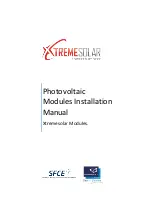
63
082809
Piping and Insulating the Solar Loop
When piping collectors, use 3/4” copper for one to four 16-tube collector arrays. Preferably use type L.
Never use PEX plastic tubing.
PEX tubing cannot withstand temperatures above 200°F, and fail in
solar loops.
Always insulate solar loops with at least a high temperature elastomeric insulation. This flexible rubber foam
insulation may be protected against UV degradation with a mastic or a 15-year latex paint applied to the
surface. High temperature fiberglass, urethane, and isocyanurates are also used on solar loops and have
jackets that enclose and protect the insulation. Use insulation with at least a 3/4” wall thickness for all outdoor
piping. Always insulate completely around pipe fittings and at the collector fittings. Pay particular attention
to insulation detail at the collector sensor. Copper pipework must be supported by pipe hangers, split ring
hangers or Unistrut clamps. Check your local codes for pipe sizes and support distances for vertical and
horizontal runs. The supports must not hold onto and compress the insulation. Pipe support hangers should
be secured directly to the pipe.
Piping the Solar Tank and the Auxiliary Hot Water Service for Two Tank System
Use 3/4” copper pipe for plumbing the tanks. To prevent heat loss through the copper tubing, insulate all
tubing with at least 1/2” wall tube insulation. This should include the cold water feed to the solar storage tank
up to 6 feet from the tank. A check valve should be installed on the cold water feed line to the mixing valve to
prevent hot water migration into the cold water piping.
The solar tank should include valves and piping for service. In addition, the back-up water heater can have
valves installed for solar hot water bypass.
A domestic hot water expansion tank can be installed on the cold water feed to the tanks. The expansion tank
should be installed downstream from a back flow preventer, for cold water feed to the tanks.
Service Valves and Instructions for Emergency
To isolate or service the hot water system in an emergency, turn system isolation valve #1 off.
To isolate the solar tank from the auxiliary water heater, the normally open solar bypass valves #2 and #4 are
shut off, isolating the solar tank from the supply of water. The normally closed valve #3 is then opened for
bypass. Under no circumstances are valves number 1, 2 & 3 to be left open during solar operation.
To leave the system in an unoccupied house when hot water will not be drawn, the solar system should be
drained of antifreeze and the controller turned to “off” or unplugged. You may also turn the system isolation
valve #1 off if no hot water flow to the fixtures is desired.














































